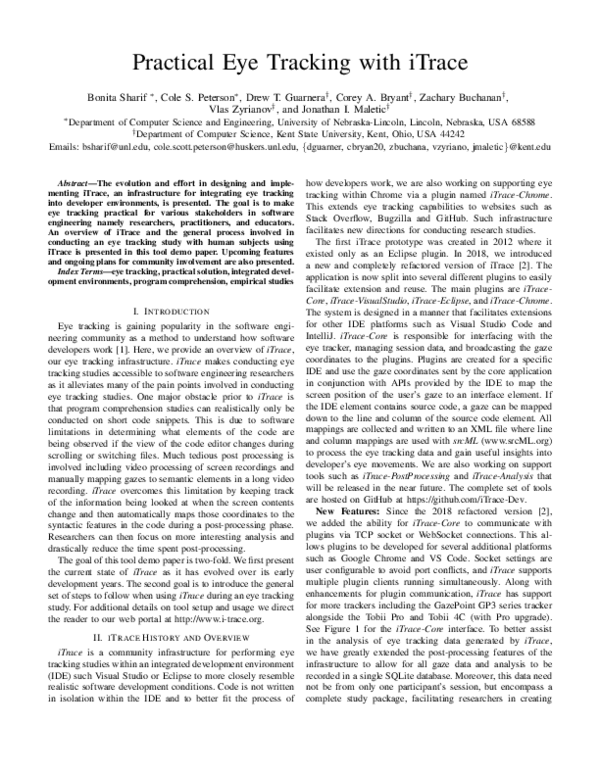

Right now we've just been purchasing Lumenera's cameras, and they've been very helpful in determining which camera specification we need for each of our applications.
#ITRACE PDF SOFTWARE#
Lumenera's cameras in combination with our software allows the user to identify our codes and decode the secure information that's embedded in them.

In our applications we need reliability and continued support of the software across all models in the manufacturers imager range. The basic image requirements for iTRACE 2DMI are fairly simple, but advances in machine vision have greatly improved speeds and capabilities of the cameras.

What camera features are important for them to be used for this purpose? The marks are identified using standard vision systems and cameras that are used every day, including cameras from Lumenera and mobile devices such as iPhone and Android. Image Credits: /Steve Mann How are 2DMI markings identified? Industrial parts can be protected using 2DMI technology. It was a very easy transition for us to go from the watch industry into the industrial space due to the huge similarities in manufacturing between them. These similarities also spill over into how the products are distributed, and also the kinds of fraud that those kind of products are subject to. There is a lot of hand-assembly and the components are made of similar materials, and the pieces are of high value. We have found that when you dig into the manufacturing processes of both watches and industrial components, such as electronics and automotive parts, there are a lot of similarities in their production. Can this technology also be used on non-consumer products? For example, such as those used in industry?ĢDMI can be applied to almost any product or surface including consumer packaged goods, medical devices, automotive and industrial equipment. We've even marked crystal glass, and one of our laser partners are able to mark diamond. We use standard industrial laser equipment meaning that we can be applied to anything - including ceramics, plastics, steels, carbon fiber, and even rubber. What products is 2DMI marking commonly used on?ĢDMI has traditionally been used by the watch and luxury goods industries, and is now being adopted by the industrial electronics industry to protect high value items, such as circuit breakers for homes and offices.Īs long as the material can hold the mark on a solid surface, we can apply a mark to that surface. This prevents mass replication and the other types of fraud associated with traditional 2D symbologies. Being a proprietary solution, only the brand that applies the technology has the ability to read the information with their own unique encryption key. Whereas conventional labels and RFID tags are expensive and also easily removed, altered or replaced to obscure the origin of the product.ĢDMI allows the brand to uniquely identify and authenticate the product regardless of what happens to the products packaging and labels. ITRACE 2DMI technology can be applied both covertly and overtly to a component, assembly or finished product, using existing production equipment, such as lasers and printers, with little to no additional cost to the manufacturer. What are the advantages of using a 2DMI marking system over conventional labelling? Our 2DMI technology helps companies prevent their product from entering the Grey Market, prevents production overrun from outsourced manufacturing and prevents warranty return fraud and liability by the easy identification of counterfeits.Īs one of the new 3rd Generation (3G) group of brand protection technologies we work by delivering a proprietary and secure, 2 Factor Product Authentication (2FA), that protects the product itself, not just the packaging. We spoke to Mark Manning, CEO of iTRACE about developing his unique technology and how he worked with Lumenera, experts in imaging, to develop the solution. This technology is uniquely encrypted to make it impossible to replicate, meaning fraudulent sales will soon be a thing of the past. To help identify fraudulent items, iTRACE has developed a unique marking system which can be used on any material. Product fraud has always been a big issue in the luxury goods markets, however it is now being increasingly seen in electronics and traditional manufacturing.


 0 kommentar(er)
0 kommentar(er)
